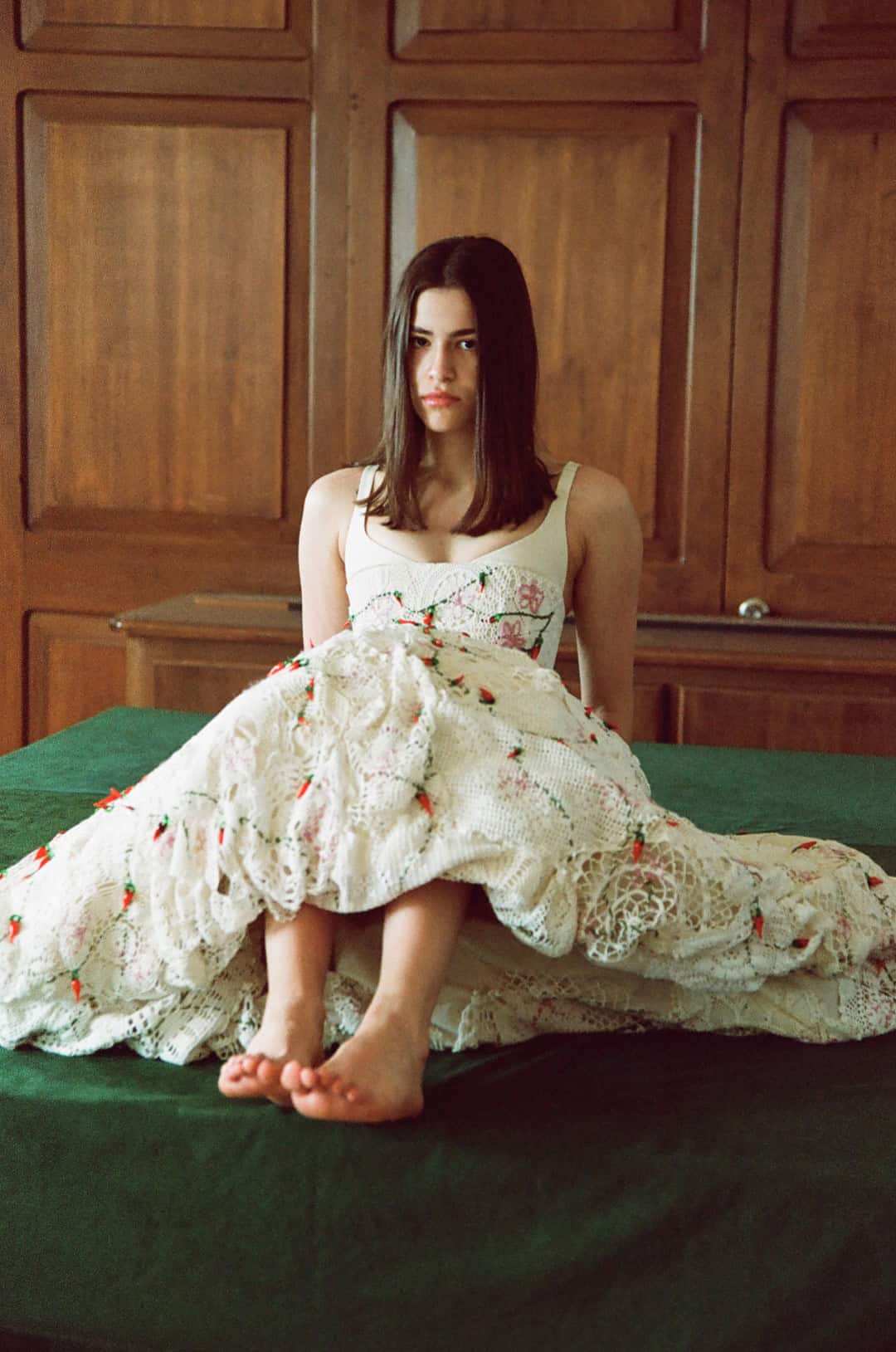Last night the historic Abroyan Factory in Bourj Hammoud, Beirut, was reimagined as a stage for memory, transformation, and belonging. The long awaited return of the Creative Space Beirut (CSB) (Instagram) graduation show, its first since 2018, was as much a declaration as a runway. Titled We Have Arrived, We Are Home, the event brought together fashion, narrative, and resistance in an immersive exhibition spotlighting four graduating designers. Each collection emerged from a deeply personal landscape, shaped by the ongoing turbulence in Lebanon and the relentless resilience of its people.
The show marked the culmination of a three-year journey at Creative Space Beirut, Lebanon’s only free fashion school, where students from underserved backgrounds are trained in the full scope of design, from concept to construction. Against the backdrop of economic collapse, war, and social upheaval, the students turned fabric into protest, embroidery into testimony, and garments into vessels of lived experience.
IFTIKHAR KANAWATI | CHRONIC GRIEF

“I started designing again after I began wearing the veil. It felt like the only way to reconnect with myself.”

Kanawati’s work is a quiet howl. Her collection Chronic Grief wrestles with the emotional silence following her mother’s death, expressed through layered textures, distorted tailoring, and hand-smoked surfaces. The pieces are stitched with sorrow, built from fabric that is dyed, pierced, and frayed to mirror the fragmentation of grief. “Each garment carries a muted violence,” she says. “But also the calm of endurance.” From deep indigos to ash greys, her palette maps a slow, painful emergence. This is grief not as spectacle, but as survival.


“Tailored silhouettes are disrupted by crumples, by collapse, because that’s what mourning feels like. Structured, until it isn’t.”
PATILE TACHJIAN | ADIEU B2079


“I wanted to say goodbye to my childhood home in a way that didn’t feel sad, just true.”

With Adieu B2079, Tachjian reconstructs her childhood in Beirut, room by room, memory by memory. Using playful silhouettes, domestic embroidery, and crocheted flowers inspired by tablecloths and curtains, her collection weaves nostalgia into wearable architecture. Mante-bead patterns nod to her mother’s cooking; a fur trim salutes a family dog. “It’s like I’m archiving feelings,” she says, “but through clothes.” Each look is tender and idiosyncratic, marked by love, loss, and the awkward joy of growing up.
“It’s the last time I’ll be in that apartment. But with this collection, it lives on in new shapes, with new movement.”
JIHAN AZZAM | VESSELS


“Our souls move through time like water in different containers, always changing, but still connected.”


Azzam’s Vessels is rooted in Druze spiritual beliefs and shaped by sculptural draping and ancestral symbolism. Drawing from traditional attire and family photographs, her work meditates on reincarnation and continuity. Cyanotypes preserve floral memories on cloth; pleats and pintucks echo ancestral folds. The garments flow from heavy to weightless, mimicking the soul’s release. “Design became a way of processing,” she shares. “Not just identity, but the unseen stories that shape who we become.”
“This isn’t about stillness. It’s about transition, arriving at yourself through what you carry.”
MOSTAFA AL SOUS | BAW7


“Bawh isn’t a collection, it’s a confrontation.”
Al Sous’s Baw7 dismantles taboo through texture, vulnerability, and rebellion. A response to years of silence after surviving childhood trauma, his collection uses iron, lace, and ripped silk to externalize pain. “The body in these garments doesn’t move freely,” he explains. “It’s weighted, like trauma.” Inspired by the invisibility of male victims in Arab society, he dresses men in pieces coded with fragility, resistance, and the right to softness. The result is a raw, unapologetic act of emotional rupture.

“I didn’t want to feminize the male body, I wanted to free it. From silence, from denial, from having to pretend everything’s fine.”
As guests moved through the industrial expanse of Abroyan, the stories came alive, not just on the runway, but in conversation, in shared glances, in the mutual understanding that design here isn’t surface-deep. At Creative Space Beirut, fashion is a language of memory, grief, home, and hope. This show, more than a debut, was a collective exhale. They have arrived. They are home.
For stories of the world’s finest designers, like those from Creative Space Beirut, visit our fashion pages.